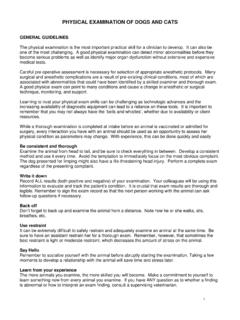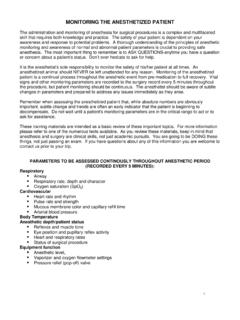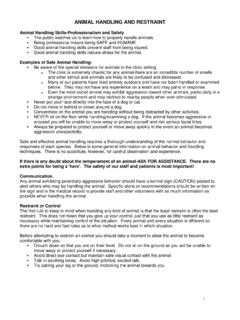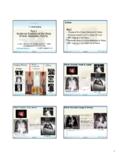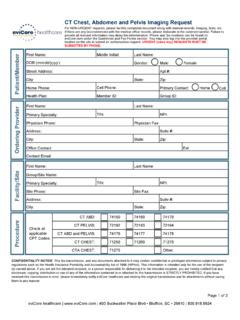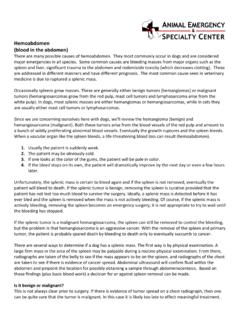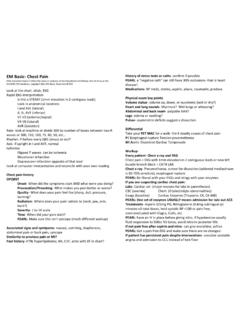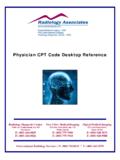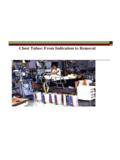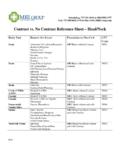Transcription of chest allows more control if the animal attempts to move.
1 1 PHYSICAL RESTRAINT OF DOGS AND CATS Restraint with dog in sitting position Restraint with dog in standing position Restraint with dog in lateral recumbency RESTRAINT OF DOG IN SITTING POSITION Place one arm under the dog s neck so that the forearm holds the dog s head securely against the restrainer's body. Place the other arm around the hindquarters to prevent the dog from standing or lying down during the procedure.
2 Pulling the dog close to the chest allows more control if the animal attempts to move. RESTRAINT OF DOG IN STANDING POSITION Place one arm under the dog s neck so that the forearm holds the dog s head securely. The head should be positioned so that it is impossible for the dog to bite either the holder or the person performing the procedure. Place the other arm under the abdomen to prevent the dog from sitting or lying down during the procedure. Pulling the dog close to your body allows more control if the animal attempts to move.
3 RESTRAINT OF DOG IN LATERAL RECUMBENCY With the dog in standing position, reach across the dog s back and take hold of the foreleg and hindleg closest to you. Gradually lift the dog s legs off the table (or floor), and allow her body to slide slowly against your body until she is lying on her side with feet pointing away from the handler. Use your forearm to exert pressure on the side of the dog s head, thus immobilizing the head. 2 Restraint of dog for cephalic veinipuncture Restraint of cat for femoral veinipuncture RESTRAINT AND POSITIONING FOR CEPHALIC VEINIPUNCTURE Place the animal in sitting position or sternal recumbency.
4 Extend the animal s front leg by placing the palm of one hand behind the animal s elbow.. Compress the cephalic vein with the thumb, and stabilize the vein by rolling the skin laterally. For IV injection, slowly lift the thumb off the vein, leaving the hand in position behind the elbow to prevent the animal from withdrawing the leg. RESTRAINT OF CAT FOR FEMORAL VEINIPUNCTURE Take the scruff of the cat s neck in one hand, grasping as much of the loose skin as possible along the neck. Grasp high up between the ears, or the cat may be able to turn her head and bite.
5 Wrap the fingers of the other hand around and through the cat s hind legs. Gently stretch the cat out by separating your hands. Brace the cat's back and neck firmly against your forearm. The hand holding the hind legs can then be used to hold the top leg and tail out of the way, while the person performing the veinipuncture pulls out on the leg closer to the table. Pressure placed vertically on the inner thigh will occlude and raise the femoral vein.
